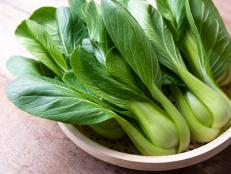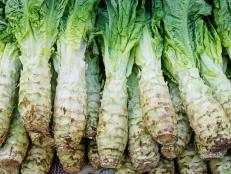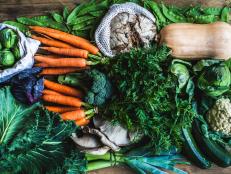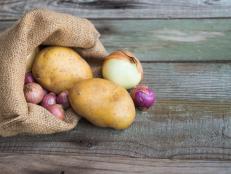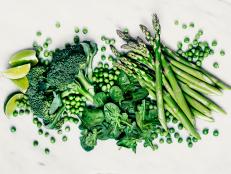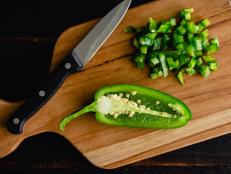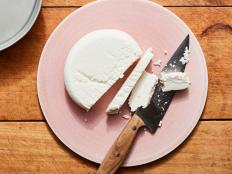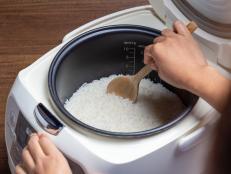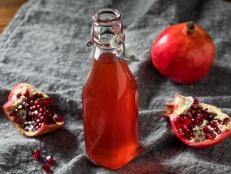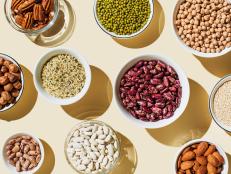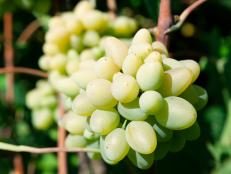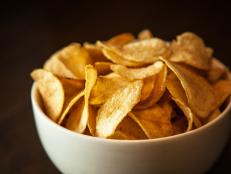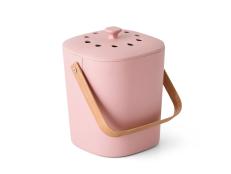How to Cut Bok Choy
Learn three ways to prepare bok choy for cooking.

Charles Masters
If you're not already familiar with bok choy, it's time to introduce yourself to it. Bok choy, also known as pak choi, is a crunchy, emerald green cabbage that has a subtle "cabbagey" flavor that can sometimes taste like celery, and is packed full of vitamins. It originated in China before the 15th century, and its name in Cantonese means "small white vegetable." Bok choy is versatile — you can rely on it for crunch and texture in salads, soups and many other Asian recipes.
Bok choy generally comes in two varieties, traditional and Shanghai. Traditional bok choy has dark, crinkly leaves and crisp, white stems; Shanghai bok choy has spoon-shaped leaves and jade green stems. The cool thing is that both the leaves and the stalks can be eaten, and this wonderful little plant is an excellent go-to for fiber, as well as for beta-carotene and vitamins C, K and A. It's also a good source for calcium and vitamin B6.
Bok choy choices
Bok choy can vary in flavor, size and color. Varieties with larger leaves work great for salads and soups, and those with narrower heads are perfect for stir-fry meals. When picking out bok choy, look for bright green leaves and crisp stalks free of holes or discoloration. Remember that crunchiness is good and steer clear of bunches that are rubbery or dried out at the stem, or are browning at the edges.
Baby bok choy is another popular variety, which true to its name is smaller and harvested earlier than traditional versions. It has thicker stems and smaller leaves, and a flavor that's a bit milder and more tender than the regular kind. It's great when you're not up for a laborious night in the kitchen, because you can cook the whole thing without breaking the leaves apart.
Once you get it home, store the bok choy in a bag — ideally a reusable one like a Stasher, push the air out of the bag, seal it and toss the bag in your refrigerator's produce drawer. Fresh stalks should keep for up to 5 days.
Cleaning and preparation
When you're ready to use bok choy, you have several different choices for cutting and preparing. Here's the easiest: Get a sharp knife and slice off the bottom 1/2 to 1 inch of the stem. (Aim for just above the junction of the base of the leaves.) Remove any tough or discolored leaves, separate the stalks, and swish in a bowl of water. If there's any dirt or other debris on the leaves, gently rub it off and then drain the water. You can also rinse each stalk under water while keeping an eye on the base of the stalk, where dirt usually collects.
Simple slices
There are a few different ways to cut up bok choy. Top safety tip for all of them: Don't get your fingers in the way of the sharp knife. The first technique, slicing, is pretty straightforward. Place the washed stalks flat on a cutting board and squeeze them into a bunch. Keep the stems and leaves separate (this is important because stems and leaves cook at different speeds), and then do your best crab-claw imitation to hold the stems in place.
Don't chop! Hold the knife at a 45-degree angle to get a clean, angled cut that increases the surface area and helps the stems to cook faster. Slice your bok choy into 1-inch sections from the base all the way to the top of the leaves.
Bok choy rectangles
For this technique, remove the leaves from the stem. Some remaining smaller leaves are OK, but be sure to cut off the biggies. Select a single stalk and make a lengthwise cut down the middle to make two halves. (Cut into thirds if desired.) Cut the stem halves into 1-inch rectangular pieces, which are great for sauteing with other veggies.
Diced bok choy
To dice bok choy, first cut the leaves from a single stalk and slice lengthwise into three long strips of roughly the same width. Bunch them together and then cut the strips horizontally into little half-inch pieces. And there you have it — a great addition to soups and salads.
Here are a few bok choy recipes to try:
Related Stories:























